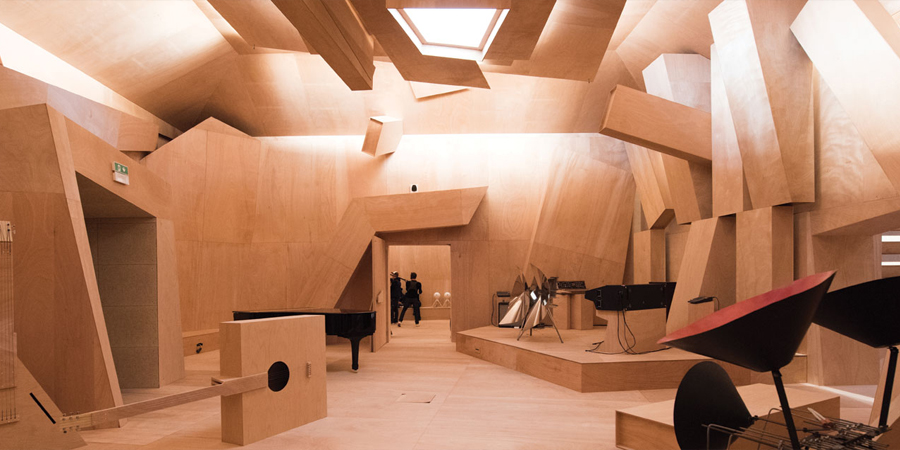
For his presentation at the venice art biennale 2017, artist xavier veilhan emphasizes the artistry of music with a dedicated space for performers, sound technicians, programmers, and producers. Within the french pavilion, veilhan has realized ‘studio venezia’ — a site that encourages the collaboration of creatives from across the globe to make music throughout the duration of the exhibition. The public is invited to the heart of this process – an event typically reserved for artists only. In keeping with veilhan’s desire to share this usually private experience, audiences across the globe can access the recordings, which have been digitalized on a sensory online platform called ‘echoes of the studio’.
With the word ‘studio’ denoting a place that houses musicians and artists in both english and italian, Xavier Veilhan builds upon this talent-rich environment with a focus on teamwork. Musicians, technicians and producers meet, merge and make every day of the Venice Art Biennale a unique and surprising encounter.
The space itself is a re-imagination of the architecture of the french pavilion, designed in 1912 by venetian engineer faust finzi. Composed as a graphical landscape of shapes, the floors, walls and ceilings form a highly functional tableau of wood and fabric that doubles as a fully operational recording studio. Numerous instruments are integrated around the space, giving musicians the tools to play and experiment as they enter.
Audiences across the globe can listen in to the melodies being created by the artists online through the interactive platform ‘echoes of the studio’. Created by paris-based creative agency BETC and music streaming site Deezer, the interface mirrors the interior installation of the pavilion through a graphical landscape of shapes. Visitors can listen to the music being recorded at ‘studio venezia’ each time they move their cursor towards one of these digital structures. Furthermore, an online archive hosts one-minute extracts of past recordings at the studio.
‘Studio Venezia’ welcomes visitors to witness one-off productions in process and aims to be a replacement for concerts. Only a small selection of the 100 performing musicians and their attending dates are known to the public, ensuring that the exhibition remains a living, breathing space for creation, rather than a passive receptacle for predetermined programs.